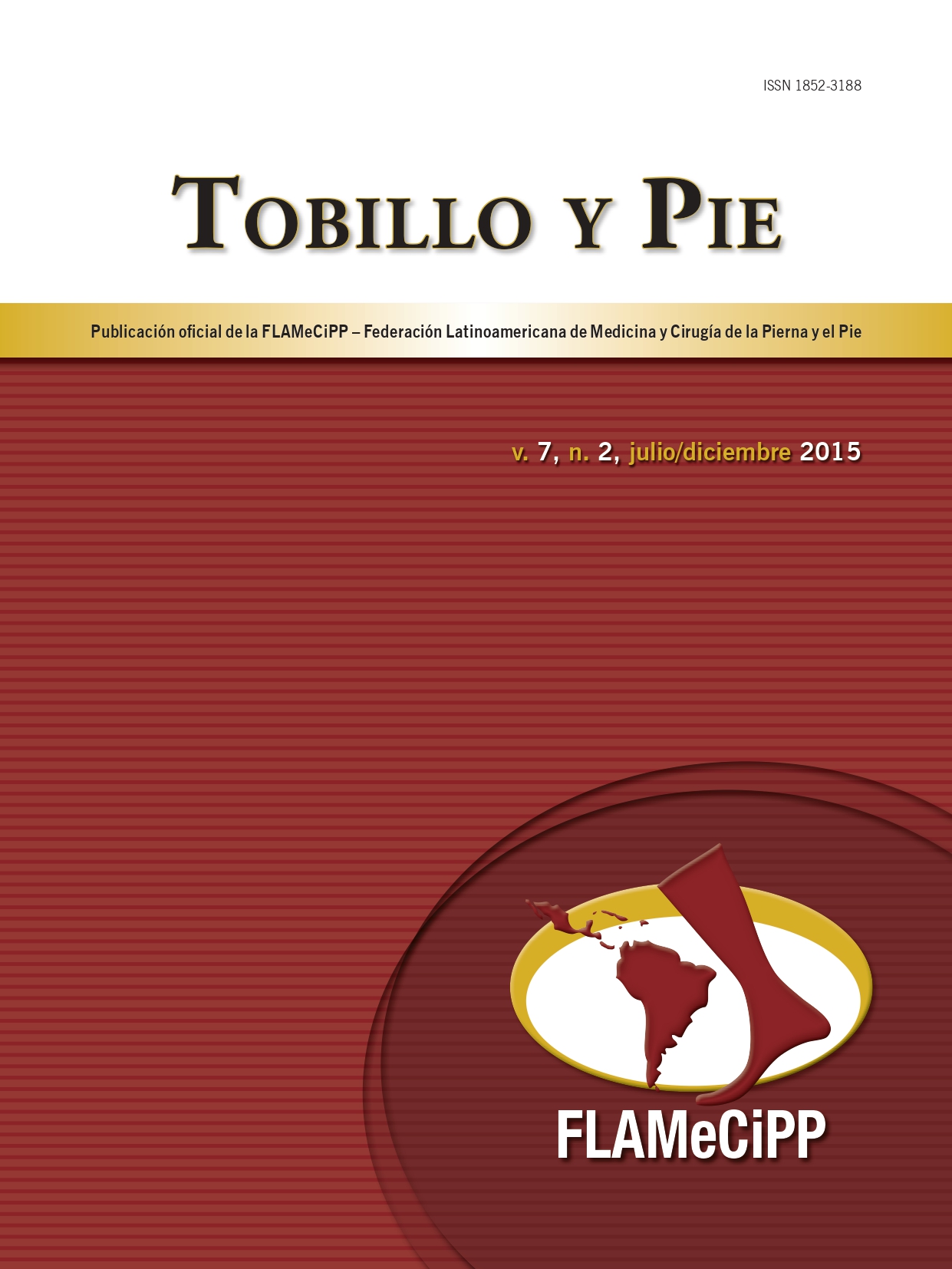Long-term results of the Ludloff osteotomy in patients treated for hallux valgus deformity with moderate to severe intermetatarsal angle
Keywords:
Forefoot/pathology, Hallux valgus/surgery, Metatarsus/surgery, Osteotomy/methodsAbstract
Objective: The Ludloff proximal osteotomy is one of various surgical options for the treatment of patients with prominent hallux valgus with moderate to severe increase of the M1-M2 intermetatarsal angle. The purpose of this study was to evaluate and show the long- term results in a series of patients operated on with this technique in hallux valgus with moderate to severe increase of the intermetatarsal angle. Methods: Thirty patients (41 feet) with hallux valgus in the presence of moderate to severe increase of the intermetatarsal angle were operated on with the Ludloff osteotomy at two different institutions between 2000 and 2011 and reviewed for this study. The mean age of the patients was 56.5 years and follow-up averaged 8.07 years (range, 3.3 to 13.6). All patients were clinically evaluated with the AOFAS score and subjectively by the Hattrup and Johnson classification. Preoperative and postoperative standing X-rays were compared and their values were registered. Results: The average AOFAS score was 90.1 points. 84.5% of the patients were totally satisfied with the outcome of the procedure. The mean intermetatarsal angle improved from 18.5 to 11.1 degrees whereas the metatarsophalangeal angle decreased from 36.4 to 16.9 in average. Shortening of the first ray averaged 2.6mm. The position of the first metatarsal viewed from the sagital plane was normal in average ranging 4mm dorsal and 4mm plantarflexed. Union of the osteotomy was seen at 43 days postoperatively in average. 21.9% of the operated feet lost their original correction with early weight bearing during the first month postoperatively with consecutive malunion and hipertrophic osseous callus formation. Conclusion: Early weight bearing during the first month postoperatively can lead to loss of correction with varus malunion and shortening of the first metatarsal, especially in patients over the age of 55 years. Transfer metatarsalgia was more related to elevation of the first ray than to its shortening. The clinical outcomes showed much better than the radiologic results. Level of Evidence: IV, retrospective case series


